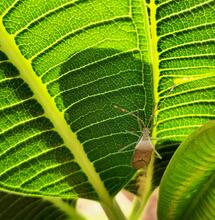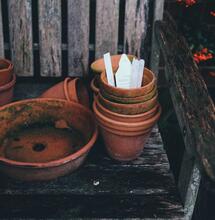Top 10 most common mistakes in indoor Cannabis growing

Growing weed is easy to do, but as a first-time grower, there are a world of mistakes that can be easily made. Knowing what mistakes are just around the corner, can help save you time and space and get as much final yield as possible. In this article, we explain 10 things that can go wrong, when growing cannabis plants indoors.
1. Heat stress
Heat stress occurs when the temperature inside your grow room is too high, and the plants are unable to pass water through the leaf tissue properly. As a result, the moisture in the leaves and roots quickly becomes used up, causing plants to take on a dry and tired appearance. Heat stress during bud development can cause plants to produce low-quality buds and cause mold and mildew in some cases.
How to fix: You will want your room temperature to be as close to 24 degrees Celsius as possible with the lights on, and around 18–20 degrees Celsius with the lights turned off. Using a temperature fan controller, you can connect a heater, fan and exhaust fan to the controller, and set it to remain at 24 degrees.
2. Spider mites
There is nothing worse than a spider mite infestation, and as a beginner grower, you may not even notice them until it is far too late. Spider mites are tiny, hard-shell pests that love high humidity, sweet terpenes and indoor grow rooms! Most times, spider mites are passed from grower to grower via infested clones or clothing.
How to fix: Getting rid of spider mites is easier said than done; however, there are methods of eradicating them once and for all, without bombing your garden with sulfur chemical bombs and pesticides. Using predatory mites is the best way and will not cause the plants any stress compared to chemical solutions.
3. Powdery mildew
An airborne pathogen that attaches itself to the leaf cells of a cannabis plant, producing a white powdery substance on the surface of the leaf. It is easy for a beginner grower to not even notice early signs of powdery mildew, and may even be fooled into thinking the white layer is resin forming.
How to fix: An environmental issue that can easily be treated, by making sure the humidity levels are below 40% and that there is a consistent amount of air flow blowing around the plants. You can also use hydrogen peroxide to spray and wash away any remaining residue.
4. Root rot
Root rot can have severe consequences if not treated in time, and will be caused by the root zone being too wet, cold and deprived of oxygen. One of the first signs of root rot is the unpleasant aroma you get when moving the pots around and inspecting the soil. The other sign is to remove the pots and check how white or brown the root hairs have become.
How to fix: Using beneficial bacteria, fungi and microorganisms is the easiest way to combat root rot in soil. When the problem arises with hydroponics, using a 10% hydrogen peroxide solution will be the most effective way to kill root rot.
5. Stunted plants
Stunted plants will indicate that there is something wrong in the root zone or that the grow room environment has changed somehow. There are a number of reasons a plant may turn stunted and grow slowly, ranging from cold temperatures, overwatering, nutrient toxicity or root rot. Flowering plants that become stunted and stubbornly flower will produce lower-yielding plants and less superior flower quality.
How to fix: The only way to fix the issue is to identify if the problem is plant- or environment-related. You would be surprised at how cold floors can affect the root zone and nutrient uptake, so try raising your pots off the floor. On the other hand, if the plants have been given too many nutrients, then try feeding them only water for the next 5–7 days until you can see the plants bouncing back.
6. Power cuts
There is nothing we can do to control power cuts, especially when the council is working on a water pipe or digging up the road close by. Power cuts will not only shut down lights, timers, hydroponic pumps and air pumps; the darkness period can also cause plants to become stressed and express hermaphrodite traits in a worst-case scenario.
How to fix: If you live in a residential area, then you just have to sit tight as and when power cuts do happen. For those who live in the countryside, a backup electric generator is well advised and will help out during heavy storms, road works and anything else that may affect electricity use in your area.
7. Over watering
I think every grower during their lifetimes has overwatered their indoor plants. If your growing medium does not have good aeration, water holding ability and drainage, then you can easily oversaturate it. Soil is the least forgiving when it comes to watering, with coco and rockwool giving growers much more leverage.
How to fix: A good rule of thumb if you are working with an organic soil substrate is to use 10% of the pot size as a volume measurement of water / nutrient solution. So if you are growing in a 10-liter pot, then only use 1 liter of water per feeding.
8. Smelly growing medium
When you open your tent and the first thing you notice is a rotten egg smell coming from your pots, this means you are either overwatering or your growing medium needs more air pockets. Nobody wants to have to work in a grow room with a foul odor, and the reason for the smell in the first place is down to aerobic bacteria, which thrive in low-oxygen environments.
How to fix: When you are fighting off a living pathogen, then you should try using organic beneficial bacteria and fungi such as trichoderma and mycorrhizal fungi. Making an aerated tea with beneficial inoculate and watering your plants frequently will soon balance out the good and bad bacteria.
9. Algae development
Algae is produced on the surface of a growing medium when light shines on organic nutrients. The layer of film nutrient develops a dark green and spongy like matter that slowly spreads over time. Algae is not the worst problem to have to deal with, however it can attract insects, pests and potentially become a breeding ground for pathogens and diseases.
How to fix: Hydrogen peroxide at 3-10% solution will remove algae, making it easy to clean off. Covering the tops of your pots or using cube caps is an excellent way to block light and totally prevent algae in the first place.
10. Molding buds
The only time you will need to worry about mold is when you have buds that are close to the final weeks of harvest. Mold grows on buds when the environment is wet, humid, warm and has little air flow. As a beginner grower, you may not be able to see mold growing inside the buds until you get around to trimming them, and in the event you can see your prime top buds getting heavily infected, then there is only so much you can do, without changing your environment.
How to fix: In the event that you notice the buds have become soft, airy and have a gray spider web appearance, then it is best to cut away the infected bud with a clean pair of scissors. Do not try and keep the bud on in an effort to save an extra 3–5 grams, as the problem will only spread. Get as much fresh air blowing around your buds, drop humidity levels below 45%, and keep your eye on the plants as much as possible.



.png)